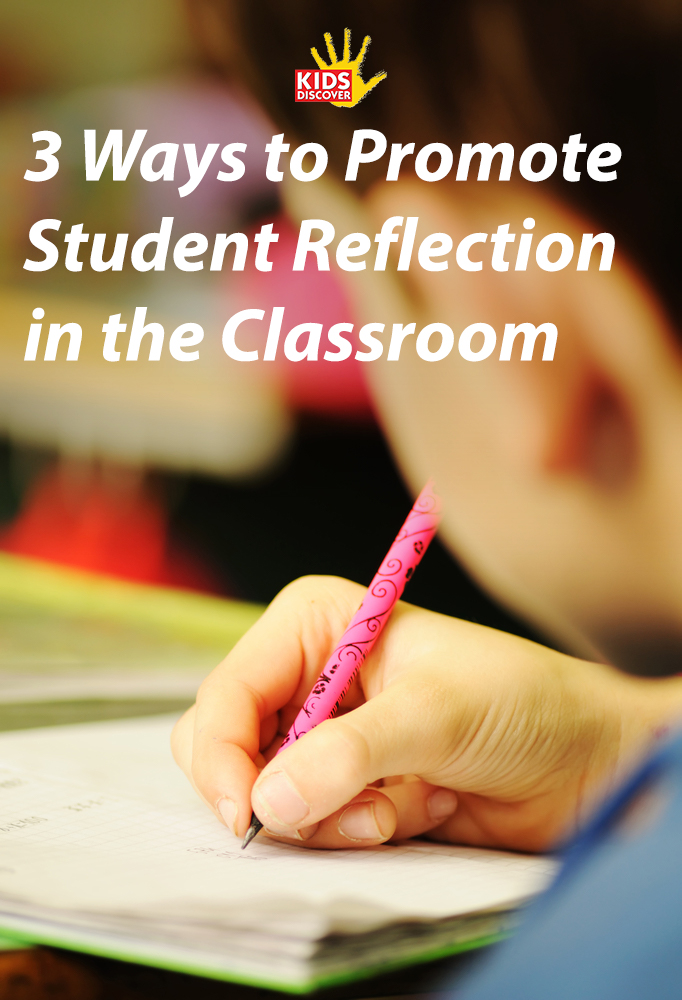3 Ways to Promote Student Reflection
- November 1, 2017
- By
 When we provide students the time and place for reflection, we empower them as learners and thinkers. Reflection on a lesson or on their own progress also allows them to build skills in critical thinking that they can apply when they are problem-solving and learning on their own.
When we provide students the time and place for reflection, we empower them as learners and thinkers. Reflection on a lesson or on their own progress also allows them to build skills in critical thinking that they can apply when they are problem-solving and learning on their own.
Here are some great ways to ensure that students have opportunities to engage in critical and reflective thinking in the classroom:
Thinking Routines
These simple yet powerful protocols can be used in any classroom. They help to make thinking visible while promoting deeper learning of curricular content. These routines are easy to incorporate into a lesson or activity, and putting thinking routines into practice does not require special materials or even too much extra time. They have been researched and classroom-tested over many years through programs led by Harvard Graduate School of Education such as Project Zero and Visible Thinking.
Students’ responses can be shared in a variety of ways including verbally, written on post-it notes, or recorded in digital form. What matters most is the opportunity for students to engage in these critical thinking experiences on a regular basis–making them routine.
I have used thinking routines in many different learning situations, such as at the beginning of a new unit of study and after a lesson or activity. Here are two that I recommend for helping students reflect on their learning:
This thinking routine helps students reflect on how and why their thinking about a topic has changed over time. To begin, ask students to consider their thoughts on a particular topic and use the sentence stem “I used to think…” to explain their initial opinions and/or beliefs. Then, after a lesson or unit, prompt students to share how their thinking has shifted, starting with “But now, I think…” Ask students to elaborate on why their thinking has changed.
This thinking routine encourages students to connect their initial thoughts on a topic to new learning. Students first share 3 thoughts, 2 questions, and 1 analogy about a topic of study. Then, after engaging in a learning experience (that may include additional learning content and/or new ideas), student share another “3, 2, 1.”
Students explain how their prior understandings “bridge” with their new ways of thinking. It is important to communicate to students that there is nothing “wrong” with their first thoughts–they are just a starting point.
Learn more about Thinking Routines on the Visible Thinking Website.
Two-sided notebooks
Sometimes referred to as “interactive notebooks” or “double-entry journals,” this method values both the inputs and outputs of the students’ learning experiences. Students record content/notes on one side (input) and process the content on the other side (output). Some teachers use the letters ‘L” and “R” to represent the left side is for the learning content and the right side for responses, reactions, and reflections.
For example, on the left side students can copy down a chart from a class lesson and on the right side, the students may create a comic strip, poem, or other creative expressions of the information.
Implementing two-sided notebooks in the classroom requires some setup and modeling by the teacher. This can be done on chart paper, a whiteboard, or screen that can be seen by the whole class. Students need to understand the purpose of each side, what kinds of things can go in each section, and that there is not one “right” way to share their thinking. Although this approach will need an investment of time to getting started, it communicates that it is important to have a dedicated space to process and reflect on new ideas in your own unique way.
Learn about using Interactive Notebooks in Science Class.
Student self-checks
Student self-reflection is found to be one of the top indicators positively impacting student achievement in educational researcher John Hattie’s highly regarded study Visible Learning. According to his analysis, the effect of student-reported grades is one of the highest influencers in relation to student learning. Since students are very accurate at reporting and predicting their achievement, incorporating this practice more often into the learning process can be a helpful tool to encourage students to push themselves to higher levels of success.
Self-reported grades are just one form of learner self-assessment. Other ways that students may evaluate themselves can be through:
- rubrics
- surveys
- checklists
- fill-in the blanks
- writing prompts
- sharing verbally
Student self-evaluations can be beneficial at various points in the learning process such as at the beginning of a new topic or lesson while working on a project, or at the end of a unit of study. It can help to provide valuable insights to help shape future efforts of both students and educators.
How do you promote student reflection and critical thinking? Please share your ideas on Twitter with @kscharaldi and @KIDS_DISCOVER.